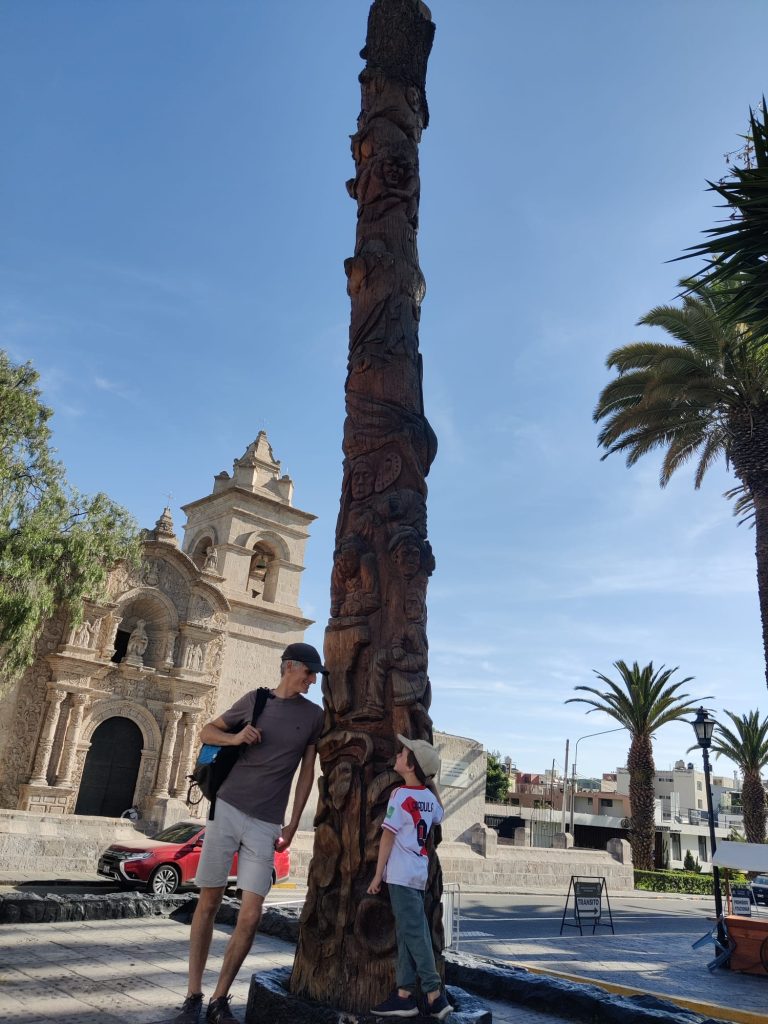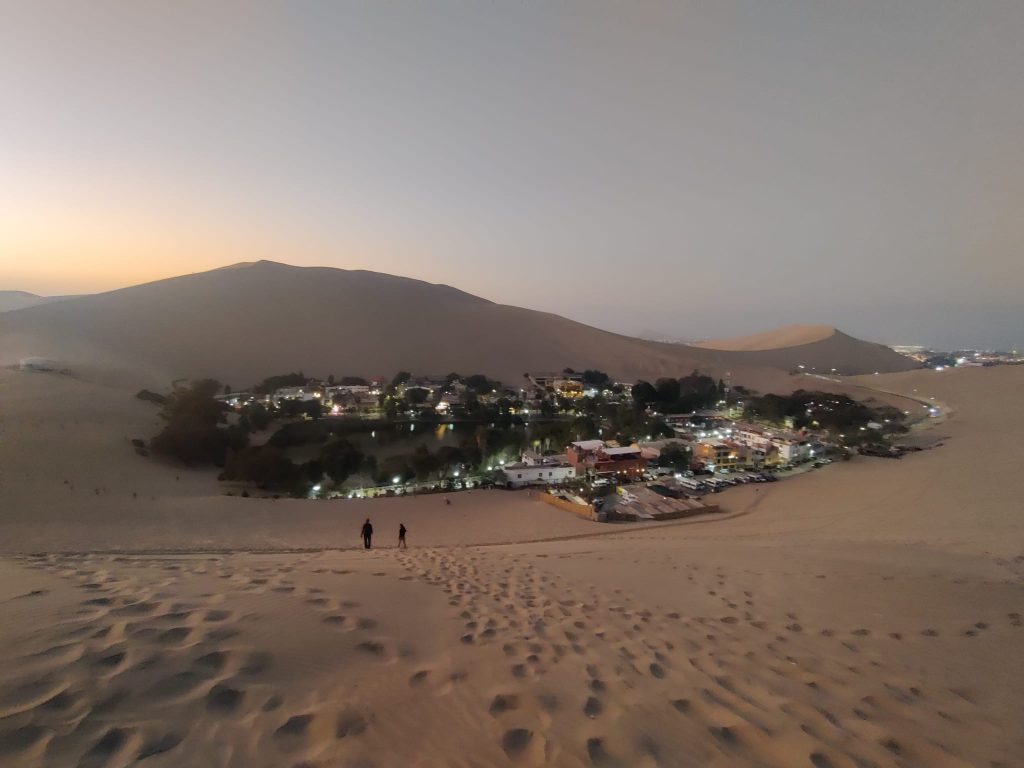Many travellers entering Peru from Bolivia will cross the tiny border crossing beside Lake Titicaca at the tiny village of Khasani. We were no different and so began our Peru adventure on the banks of this enormous body of water.
The south of Peru is notably wealthier than both the northern part of the country, and than its neighbour Bolivia. This was evident to us almost immediately as houses were fully constructed and even had the luxury of paint on them (from time to time). Astro-turf football pitches were also in evidence, something we had not seen in a long time.
We spent a couple of nights on the Uros Islands off the coast of Puno. These islands are entirely man-made using totora reeds, with the local boats even made using the same material. Having travelled via a small port, we landed on a tiny one-family island run. The island and accommodation were functional but nice, and certainly considerably more luxurious than how the locals live. Aside from cooking, cleaning and generally entertaining us with her good nature, our host Delia also organised a small tour for us the next day to a nearby community, where we got a glimpse of their daily lives. It was wonderful to see how they make a living while still keeping their locals customs and traditions alive.
Colca Canyon is a river canyon famed as one of the world’s deepest. It is also home to the Andean Condor, an amazing creature that lives about 60-70 years. We had the good fortune to spot the condor in many locations during our brief stay in the Colca region. The region boasts many lovely little towns with nice restaurants, friendly people and usually some thermal baths. We stayed in Chivay, Yanque and Cabanaconde, enjoying the unique charm of each. The altitude also meant days were warm and nights very refreshing (nice camper van weather!). The canyon lends itself to many trekking options, including a multiple-day trek to the canyon floor and back up again. Unfortunately with our young children this was not an option for us, but have heard that it is a fantastic experience.
The city of Arequipa, also know as La Cuidad Blanca or “White City”, is Peru’s second largest city. It was even temporarily the country’s capital in the late 19th century during the War of the Pacific. The city bears little to no resemblance to other former Inca populations in southern Peru, given that the Incas do not actually have a history there. The city itself is a nice place to spend a few days, learning about its history, sampling the thriving culinary scene, and generally enjoying some previously hard-to-find home comforts.
The Nazca Lines were next on our itinerary as we travelled north along the Pan American Highway. These were made famous following amazing work by a German lady named Maria Reich in the early 20th century. The enormous lines in the desert were made by the Nazca people starting around 2000 years ago and represent animals and plants among other things. The best way to see these is via a short flight in a small tourist plane. We however chose to simply visit the “mirador” or lookout points built along the main road. While certainly not having the same visual impact, we did enjoy what we could see and really marvelled at the architecture and endeavours of the time.
Our last stop in southern Peru would be the desert oasis of Huacachina near the city of Ica. The lagoon in the centre of the tiny village is dwarfed by the incredible sand dunes all around. These dunes really should be seen to be believed, and we hugely enjoyed scaling them (albeit very very slowly)! We also joined the other visitors to the town for the evening sand buggy tours. Not only does this entail driving all around these beautiful dunes, we also got to try our hand at sand-boarding which we loved. Many people simply come to the town to do this and then promptly leave after touring the dunes. We would certainly recommend taking the time to experience the town a little more and the incredible dunes it lives in the shadow of.
Overlanders and summer holiday visitors often skip this part of Peru and focus on some of the more well-know tourist spots such as Cusco, Lima and Huaraz. We would encourage anyone travelling to Peru to make the effort and sample what the south of the country has to offer. We really took a shine to the people and the places we visited and the unique geography this area possesses.












Leave a Reply